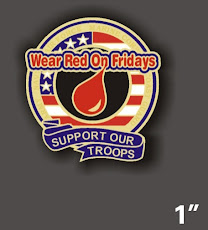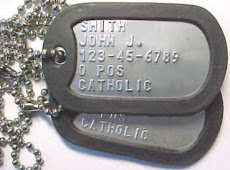I said that I would tell you about my ship someday. Today is a good day to start, but it is really long. Just show the guys the respect and read the story.
The USS Frank E. Evans DD754 (DD is the designation for a destroyer) was launched and commissioned in 1944, and, after a shakedown cruse, set sail for the Western Pacific (WESTPAC in Navy terminology.) She arrived on station in time for the Okinawa invasion and earned her combat stars battling kamikazes, dueling with Japanese ships and doing shore bombardment in support of the ground troops. She was in combat until the end of the war. From there she did a stint in China and eventually ended up in mothballs.
When Korea broke out she was re-commissioned and sent back to WESTPAC to fight in that war. She was engaged in many shore bombardments and even received small arms and mortar fire because she was so close to the shore. Her nickname is “The Fighter,” and she earned the moniker. However, after Korea, she was sent back to the mothball fleet in San Diego.
In the early 60’s she was brought back again and refitted in what was called FRAM II. Her WWI and Korea configuration was removed and she had a helicopter deck added to the same place her #3 gun mount was located. This was used, unsuccessfully, for an unmanned torpedo carrying drone. The Navy just couldn’t get it to work more than ONCE in a row. This is when I came on board, in 1962.
I was fresh out of boot camp and from a leave home, and I was looking forward to boarding a true fighting ship. I got off the pier bus and looked down the pier. There were four small ships on the left (port) side of the pier and the beautiful, huge, gray ship on the right (starboard) side. I walked down to the gangway and ask the Marine (this should have been my first hint, since Marines don’t guard the gangways of destroyers) if this was the Evans. He said that this was the USS Helena, a cruiser of great renown. He pointed across the pier to the four little ships and said the Evans was the one next to the pier. Man! Only a little over 300 feet long and I was going to go to sea in THAT? Oh, well! I reported aboard. I was sent immediately to the deck force (boson mates who took care of all things outside – painting, chipping pain, painting, sweeping, swabbing (mopping) and painting, not to mention chipping and painting. My bunk was in the forward part of the ship two decks down from the main deck.
I spent two months there and, while at sea, I was stuck painting a 3’ by 3’ by 3’ locker below the anchor chain locker, and getting sicker by the minuet. Just before I was about to pass out, one of the guys stuck his head in and said some lieutenant wanted to see me. I reported to his stateroom and was told that I had scored high enough on my battery of test to be considered for radar training, and did I want to give it a try. I was trying soooo hard to keep from upchucking on his shoes that I almost wasn’t able to get out my, “Hell, yeah… uh, Sir.” So that night I had the mid-watch (midnight to four in the morning.) This normally meant I would get to sleep in until eight a.m., but I was awaken at six a.m. and told to report to CIC (Combat Information Center or Combat for short.) I was then made a radar striker.
The first person I met was a gravely voiced, thick glasses wearing, lisp speaking first class pettyofficer by the name of Gary Hodgson. He never combed his hair and it stuck out all over the place like a mad scientist and his laugh was as raspy as his voice – and he laughed often.
This is where I spent my tenure as a sailor in the Navy. I was able to visit the WESPAC (three ports in Japan and one in Hong Kong) and Hawaii and Midway Island and San Francisco and San Diego. Although we did operate with the USS Oriskiny, an attack aircraft carrier with jets on board, we mostly operated with the USS Hornet, an anti-submarine aircraft carrier with propeller driven planes on board. We did do some early bombardment on Viet Nam in support of the advisors there at the time. But no real combat experience for me. I left the ship in 1964 and returned home a relatively normal life. But the Evans kept on doing her thing.
After I got off she made five more trips to the WESTPACK and received another combat star for her experiences. In 1969, before she left for her next cruse to the Pacific, all the personal had to have urine test for drugs. She set sail and during the cruse she pulled into Subic Bay, Philippines. She was immediately boarded by several government type agents and arrested several of the crew for failing the drug test. The captain was furious and demanded more men to bring his crew back up to compliment. So he received around thirty new recruits fresh from boot camp – some of whom had not even had the opportunity to go home after their training. Also on board were three brothers from Niobrabra, Nebraska, Gary, Gregory and Kelly Sage; Chief Larry Reilly had extended a year before retiring to serve with his son Larry Jr.; and my old friend Gary Hodgson was serving out his last year before retiring.
Anyway, there were a goodly number of untrained men on board. And she was heading to Viet Nam to be on “the gun line.” Meaning she would be doing close in bombardments to aide the men in the jungles.
She was there for about a two weeks when she (and when I say she I mean all four destroyers in the squadron) was ordered to head South out to the edge of the South China Sea and join up with the HMAS Melbourne and her task group of Australian and New Zeeland ships to practice in joint maneuvers.
One of the maneuvers that are done dozens of times when operating with a carrier is moving to the rear of the carrier. When aircraft are launched or retrieved there has to be a tin can 500 yards off the stern of the carrier in case something goes wrong. On June 3rd, just after three a.m., the Evans was order to go to plain guard. All she had to do was turn to port and circle around to fall onto station as the carrier went by. But the OD (Officer of the Deck) got confused between our base course and the zig zag course and he turned to starboard (right) and headed on a collision course with the Melbourne.
Everything became confused about then. Radar was telling them they were on a collision course. The Melbourne told him they were on a collision course, and finally, the OD ordered the rudder Hard Right. At the same time the Melbourne broke all the rules of the sea (the biggest ship has the right of way) and turned her rudder Hard Left and she rammed and cut in half the Evans at mid-ships. Everyone in the forward fire room was killed instantly by crushing metal or twelve hundred degree steam. Everyone in CIC was killed. All but five men below decks were drowned because the front half rolled over and sank in three minuets. Among the dead were all three Sage brothers, my friend Gary Hodgson and Chief Reilly watched his son go down (he was in the forward fire room – he volunteered to help out that night because one of the regular guys was sick or something.) In all, we lost 74 of Americas finest, and only one body was ever recovered and he was burnt pretty bad.
There were many stories of heroics that night. Our guys were trying to keep the back half afloat while working with the wounded and burned. The Melbourne had helicopters in the air immediately and they saved many of your men. There were men jumping OFF the Melbourne into the water to save some of our men and others were on the deck with rifles shooting at sharks. Many men on both ships earned commendations that night. The other ships tried a search and rescue, but no more were found. The front half carried and drug the seventy four down to eternity.
Afterward, the Melbourne captain’s 30+ years of service was ruined and he left the Australian Navy without his retirement. The captain of the Evans was exonerated but never held command of a ship again. He retired, but never got over loosing his ship and so many men. He passed away a couple of years ago, but he wouldn’t attend any of our reunions. Not one survivor ever blamed him for anything, but Navy Command has is traditions, and he felt so responsible.
The OD got a letter of reprimand in his file, which means he would never command a ship in the USS Navy. In civilian life he would have been charged with 74 counts of manslaughter. But the Navy has her own rules and customs. The OD left the Navy and no one knows where he is – that I know of. I haven’t mentioned the names, because it isn’t necessary. He has his cross to bear and doesn’t need any help from others.
So now you know, or maybe you don’t because I can’t express the story in my limited vocabulary, why I feel so proud to be at the reunion with such distinguished and brave men. I don’t know how I would have reacted in their place, but being a radarman, I would have been bunking below the mess decks (three decks down) where only two radarmen made it out. In the bow, where I was first stationed, only three men made it out. So I might not have been here at all. As a radarman I have been involved in many plain guard situations and it could have happened at any time, especially at night. Not likely, but it could have.
The HMAS Melbourne had already sunk one Australian destroyer doing the same maneuver a couple of years before and had two close calls a few nights before the collision with a couple of our destroyers. I believe she was a jinxed ship, but that’s just me. If you want to read some first hand accounts, Google USS FRAND E EVANS DD7545 and look around. The association is working on a new web site where we will be able to blog. I’m looking forward to that.
I guess this is way too long for a blog, but I couldn’t stop typing. I hope you remember the 74 in your prayers. I do!
Details
-
Caption: Detail from “Ambush in Westchester.” This depicts Lee’s Legion
Dragoons attacking a party of Mounted and Hessian Foot Jagers on the Post
Road ne...
3 hours ago











































35 comments:
What a terribly tragic story. I really feel for the officers in charge. What heavy burdens they must carry. Thanks for sharing this story.
grizzbabe - all the survivors carry a great burden. Some with survivor guilt, some who cannot talk about it, but all that I have met are successful in their chosen fields and try to keep a positive attitude. Those who can will set around and tell you about that night. If you have ever served aboard a ship at sea, the stories will raise the hair on the back of your neck because you can just “see” what they are saying. “There, but for the grace of God and some outstanding sailors on watch, go me.”
That is quite a story. Rekindled some of my own memories of life on a tin can.
oh man what a sad story, you told it so well, of course i will pray for these men as i pray for all those in the services.
dont know what else to say mate, you always give me good advice we could have a coffee and a chat?
thanks for being around x
I still get chills when you tell her story. Great writing, Dad.
Wonderful story, Coffeypot. Thanks for sharing.
Such a sad end to a ship. I think one of the saddest sights is a ship sinking - and so many personnel lost. Thank you for sharing.
Once I started reading this - I remember the horrible accident in the news. I was very young - but those kind of horrors always stay with a kid.
I've got to get the hubby to read this.
A great story, told by a great storyteller.
A great story, told by a great storyteller.
There's nothing like this in my family background. In m husband's family there are a few WW1 stories but nothing as gripping as this.
I can't imagine how much responsibility sailors have every day! It really does take bravery.
Thanks for sharing.
Yes, there is a lot of sadness in this story. You should hear the stories from the families who lost their love ones that night. Dying is the easy part. It’s the ones left behind that has the truly difficult time. But it is not all sad.
It is so inspirational to sit with these guys and marvel at how they overcame (not all, but most) that night and grew into successful family men. Some are mechanics, some are farmers and ranchers, some are corporate heads, and some are retired. A couple of them made the Navy a career, and are now involved with their new careers. That’s why I respect these guys so much. They did not sit around and feel sorry for themselves or ask for handouts. They got own with their lives and, as some said, tried to become a better person for those who could not.
And yes, Heidi, the jobs the Navy, Army, Air Force, Marines and Coast Guard perform is very dangerous. Every minuet of every day there is a sailor at sea, an airman in the air and a soldier walking a perimeter somewhere in the world. And all of them know the dangers and accept it as part of their job. They are truly my new heroes. Yes, there are a few bad eggs in the group, but almost all are just brave young men and women making a difference, and forming friendships that can last a lifetime.
To be such a humerous person, when it comes to reality, you certainly tell your story well, with tenderness and obvious respect for all involved. Thank you.
jmhc - whom ever you are, thank you for your kind words. Sometimes I surprise myself. But I don't have the ability to put into words how I feel about all those guys (in a macho, straight, mano a mano, masculine sort of way.)
Mr. Coffeypot,
I am a senior at Portland State University. I love history and your first hand accounts about your life during such turbulant times are great..I wish you would write a book.
KG in Portland Oregon
KG, thank you and I am glad you enjoyed the story. I was not on the ship when she went down, but I have friends who were, and I will not take any credit for their sacrifice and heroism. And any book I write about my life would be more of a short story and would put an insomniac to sleep.
Tell me, how did a senior and PSU find a little coffeypot blog? Are you a history major, and do you have your own blog?
Good luck with your senior year. It will be the longest year of your life, and, after graduation, you will look back on it as you’re shortest.
Thanks Coffeypot:
I wason Melb th nite of collision.
I never went to any reunions -
util th 30th in Sydney .
As you said to grizzbabe - I still
carry a lot of survivor guilt .
You see out of all th calls for
help I could only rescue 2 men .
I have not seen them since . I sure
hope they are ones who have had a
great life .
Zoomtopz
Zoomtopz, thank you for all you did that night. You have absolutely nothing to feel guilty about. Instead, you should be proud because there are two good men alive because of what you did. That, in my book, makes you a hero. I believe they had a good life, too. Besides, most of the survivors I have talked to believe that everyone in the water was rescued by either one of your boats, a helo or someone like you going in after them. Well done, mate.
This is so beautiful and you tell it wonderfully. Thank you for sharing...hugs! Skippy
Thanks, Coffeypot, for writing the story. I know the families of the survivors appreciate it too. My brother was in the US Navy, and he was killed in what I believe was the largest peace-time accident in US Navy history. (I'd have to double check that fact.) I love to hear the stories of his ship and the sailors who served on her as much as I loved to hear my brother talk about his ship while he was still alive. Those stories are the closest I have to him and his service since his death.
I don't write about my brother on my blog because I'm not looking to be found, and the other family members are internet-junkies. If you are interested to know what ship it was, email me. Meanwhile, thanks again. :)
amy, thanks for commenting and I'm sorry about your brother. You did not leave a link to your site so if you will email me the name of the ship, I would love to read about it. johnjudyc@comcast.net
oops. i'm emailing right now.
A sensitive, sad and compelling story. Biker Buddy read this and was very interested and engaged.
Dear coffeypot, I just read your story,it was really heart warming to hear something about the Evans. My father was a chief petty officer on board the Evans for 2 hitches.He became a recruiter in 1963 and moved to Ukiah,Ca.and finished his career in 1969. I remember when he heard the news of the accident his heart was broken.That was his ship and he had loved serving on her.His name was Robert Eugene Dick.He was in the boiler room.Thanks Again.darbydick@Yahoo.com
My dad was a Chief Petty Officer, onboard the HMAS Melbourne the night of the collision. He was damage control and was one of those brave men who jumped in to save the sailors. He as since passed away, but we were unaware of his citations until his service record was released to my mother after he died. The Australian public was never told the truth about what happened, we were told it never happened, but my mother has the photos to prove it. My father and many others had to live with the terribly memories for the rest of their lives. I say a prayer for all those involved and a have a special place in my heart for the Captain of the Melbourne. Thank you. "Lest we Forget"
Anonymous, thank you for your comments and I thank your dad for all he did. Australia has since recognized the tragedy and has been very gracious to our organization. We have been in Melbourne for one reunion and have plans to return in a couple of years for another reunion. I can tell your dad was a true hero because he didn't brag about his service. He just did his job the best he could and made the world a better place. I have sent a prayer his way.
I served on board from April 1956 to June 1957. This was my third duty station, and was I proud to be at GQ in mount 51. The West Pac cruise was the highlight of my Carreer. I made SK3 aboard her. I had made Chief and was stationed at GTMO and in charge of C&SS when a FN came in with a chit for a new seabag and it had USS Frank E. Evans (DD754) on it. That is when I was made aware of what had happened. I am now in the process of putting togeaher a log of my duty stations, and all information on my 20 Year career. I was stunned with the great coverage that is available on the internet, and believe me it brought back memories of great times, and sadness of the end. Jim Bourke SKC, USN (Retired)
That story was reasonably correct,but your Captain was found guilty but only received a reprimand. Also he lost a Son onboard Evans .I was there and did speak to your Captain.When we got him onboard Melbourne,he was covered in blood and oil,but stayed and spoke to us prior to going on the bridge .
It was indeed a sad day for all of us especially when having to stand and watch the forward section go down and there is nothing you can do to help. The early morning was very quiet except for the Human noises as she went down.
It is someting I will never forget and dream about it most nights .
Peter.
Jon Stever was a young Ensign on board. He was once my roommate In O.C.S. at Newport, RI in 1967-8. We were class Mike 6805. I believe that he had a twin brother....in California as I recall.
I heard that he died on the Evans from another classmate that I just happened to run into in a bar in Japan shortly after the accident. I was shocked and cried.
I saw the Evans at Subic a few weeks later. It was amazing. It looked like the bow had been cut off with a Skill saw...so clean and neat. I heard that she was being towed out for gunnery practise in the near future.
Someone told me that four JOs were trapped in their small stateroom forward because a ladder had not been propwrly secured and jammed their cabin door shut. I heard days later in a local hangout that two chiefs struggled with the ladder even as the bow started to go down and only escaped as it went under. I do not know if the story was true, but I believe it to be. I expect that my roommate was one of the four. So very sad.
i enjoyed reading your story brought more information to me than i knew about i am a cousin to the sage brothers from niobrara bill sage crofton nebraska
Anomyous, thanks for commenting. I have met the mother, wife and son of the Sage boys, and they are all fine people. If you start a blog please let me know so I can follow your entries.
I am alive only cuz my dad, Steven J. Myers survived this disaster. He is still alive and well... lives in Vallejo, CA.
On Veteran's Day 2011, I entered a search on my cousin's name and the Evans. This is the site I found. Thank you Coffeepot for filling in some of the blanks in this tragic story.
To the Annonymous post on May 25th, Jon Stever was my cousin. You are correct that his twin brother still lives in California.
The last time Jon and I went fishing in the Eastern Sierras was when he met the girl he became engaged to before entering OCS. Sometime prior to the accident, they broke their engagement. I visited Linda the day it was confirmed that Jon was lost. I thought I owed that to Jon.
Given Jon's duty assignment I knew that his stateroom was in the bow. Your story about the ladder, door and chief's actions is the first I've heard of that account.
I know Jon was proud of the Navy and his commission. I also know, from experience, that he had a little bit of devil in him. I hope those on the Evans saw both sides.
Thank you for keeping the story alive.
As an ex member of the RAN and being on the Melbourne in 1969 when we hit the Frank.E.Evans , it was a horrible sight and sound of having her for'ad section slide past us with all the Men onboard yelling , crying and screaming for thei lives , and us on the flight deck of Melbourne not being able to do anything about it except to keep my team fuelling the choppers for rescue operations .What an absolute waste of good lives , and I feel so sorry for all the Families left behind . It is something that still gives me nightmares , and will most certainly never foget it .
Post a Comment